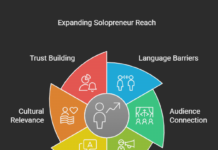A multitude of reasons support the use of project management software. Even smaller companies are expected to benefit from it. However, it’s also important to emphasize that using one does not automatically translate to advantages or benefits. There’s also the need to properly use the software to maximize the gains that can be derived from it.
The following ideas should be useful in making the most of a project management software:
1. Provide orientation or trainings for the intended users.
A project management software is only a tool. It could only be as good as how its users use it. As such, it’s highly important to adequately orient users on how it is supposed to be used. Even those touted for being highly intuitive or easy to use may still have to be properly introduced to their intended users. Users need to know the best way to use the software. Users need to be aware of the range of functions and features so they can take full advantage of them. This is on top of the usual computer training in the workplace. This is about getting properly acquainted with the specific project management software you want to use.
2. Integrate the software with other business software if possible.
One of the most important features that should be considered in choosing a business software is compatibility or the ability to integrate with other business software. It’s not common for companies to always use software from just one provider/developer. An accounting software may have already been in use before you decide to get a project management software. Fortunately, many business software tools nowadays are designed to enable integration—meaning, the data produced by one software can be accessed by or transmitted to another software in a compatible format for further recording, processing, or report generation.
3. Customize it.
Customizability is a feature many project management software typically offer. This usually means having the ability to add more fields in the dashboard/interface or the ability to add a logo and other visual changes to integrate the company’s branding and color theme on the software interface. It could also mean support for add-ons that add more functions to the software to address specific situations or schemes that are not adequately addressed by the standard features set of the software. If these customization options are available, it certainly makes sense using them.
4. Ascertain that you have the right hardware specs and supporting system software.
While most business software are not resource-intensive (heavy on processing and memory use), there are those that require certain specs to work at their best. There are also those that require specific system software to properly run. You have to make sure that your devices have more than the prescribed hardware specs to run the software. Don’t settle with having just the minimum prescribed hardware specs. Likewise, be sure to properly install (the latest versions as much as possible) the required system software, the .NET framework for example, to ensure optimum performance. Ask the software vendor for these details if they are not indicated on the installation wizard or installer disc packaging.
5. Make good use of web-based functions and data backup.
Being able to access the project management software through the internet is a major advantage. This means flexibility as data can be conveniently accessed anywhere, anytime. Also, with web-based access, it is possible to control the software from anywhere to set schedules or assignments and monitor the progress of the tasks that have been assigned earlier. Moreover, be sure to have regular data backup, preferably cloud-based. Most business software come with the ability to generate data backups as a standard feature. Don’t forget to make good use of it.
6. Secure it.
To clarify, this is different from security in the sense of protecting the software and the data it stores from malware and other threats. This is about the security protocol or scheme with regards to accessing the software’s interface and functions. Your project management software likely comes with the ability to limit access to certain data and functions to specific users. You need to carefully configure this. Not everyone should be allowed access to everything in the projects management software. There are details that should only be revealed to those in the higher management team. It’s important to carefully set access controls especially if you are using a project management software with a collaboration feature.
7. Update it.
It’s not going to be uncommon for software tools to require patches or updating. Well-maintained software from reputable developers get updated every so often to address issues or defects that you may have not encountered yet, but have already been experienced by other users. There are also patches intended to address emerging online threats. Additionally, updates may also introduce new features or replace old ones that have already become obsolete. Updates are very important that it’s imperative to download and apply them as soon as they are released. If you want to get the optimum function and performance of a software tool, you need to make sure that it has been patched, updated, or upgraded to the latest version.
***
It’s not enough to simply decide to use a project management software. The decision to spend for a project management software should also come with the resolve to use it effectively and efficiently. It’s important to make sure that software spending results in major benefits. You should be exploring and exploiting all the advantages a software tool can offer.
Find a Home-Based Business to Start-Up >>> Hundreds of Business Listings.

















































